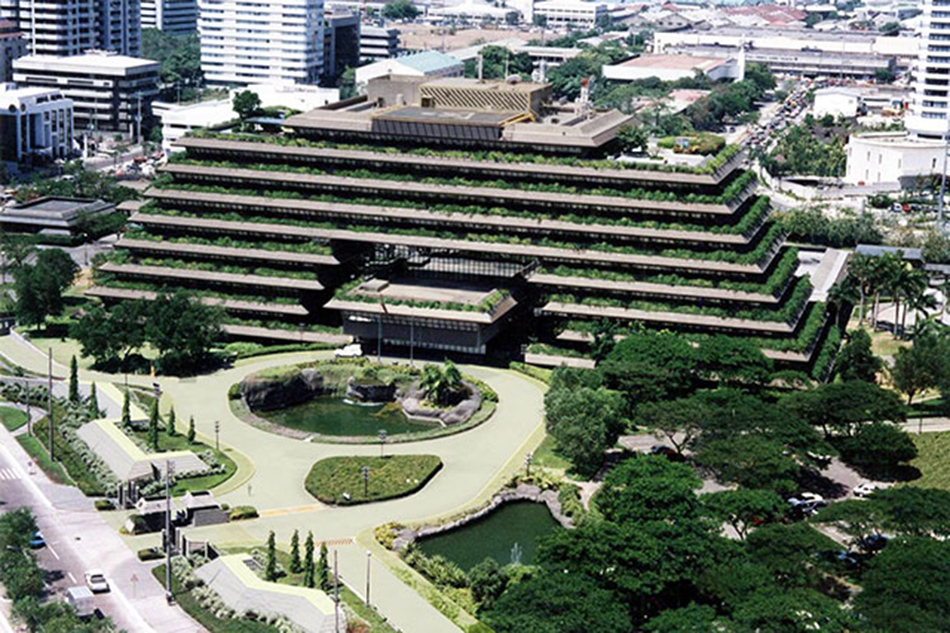National Artist for Architecture Bobby Mañosa has died | ABS-CBN
ADVERTISEMENT

Welcome, Kapamilya! We use cookies to improve your browsing experience. Continuing to use this site means you agree to our use of cookies. Tell me more!
National Artist for Architecture Bobby Mañosa has died
National Artist for Architecture Bobby Mañosa has died
ABS-CBN News
Published Feb 20, 2019 06:11 PM PHT
|
Updated Feb 20, 2019 09:18 PM PHT
MANILA (2nd UPDATE) -- Franciso "Bobby" Mañosa, one of the country's great architects, known for his designs inspired heavily by the aesthetics of the bahay kubo and the bahay na bato, has died due to lingering illness at 88.
MANILA (2nd UPDATE) -- Franciso "Bobby" Mañosa, one of the country's great architects, known for his designs inspired heavily by the aesthetics of the bahay kubo and the bahay na bato, has died due to lingering illness at 88.
Mañosa, a central figure in Philippine architecture for more than 50 years, passed away Wednesday, according to his children, only a few months after he was conferred the National Artist award.
Mañosa, a central figure in Philippine architecture for more than 50 years, passed away Wednesday, according to his children, only a few months after he was conferred the National Artist award.
He was acclaimed for his buildings, which highlighted indigenous materials such as the bamboo and the rattan, placed emphasis on spaces meant to convey the importance of family and communities to Filipinos, and incorporated considerations for our tropical climate.
He was acclaimed for his buildings, which highlighted indigenous materials such as the bamboo and the rattan, placed emphasis on spaces meant to convey the importance of family and communities to Filipinos, and incorporated considerations for our tropical climate.
"I design Filipino, nothing else," he once declared.
"I design Filipino, nothing else," he once declared.
ADVERTISEMENT
Mañosa is also credited for pioneering sustainable architecture, way before the environmental design movement gained headwind locally. He conceptualized the "edible garden" -- a design where plants surround the external walls of structures.
Mañosa is also credited for pioneering sustainable architecture, way before the environmental design movement gained headwind locally. He conceptualized the "edible garden" -- a design where plants surround the external walls of structures.
The Cultural Center of the Philippines, which is located near one of his greatest creations, the Coconut Palace, led the tributes by calling him the "Father of Philippine Neo-vernacular Architecture."
The Cultural Center of the Philippines, which is located near one of his greatest creations, the Coconut Palace, led the tributes by calling him the "Father of Philippine Neo-vernacular Architecture."
Some of Mañosa's landmark projects included the Our Lady of Peace Shrine in EDSA, the initial design for the LRT-1 stations, the Chapel of the Risen Lord in Las Piñas City, the Amanpulo resort in Palawan, and the San Miguel Corporation headquarters in Ortigas.
Some of Mañosa's landmark projects included the Our Lady of Peace Shrine in EDSA, the initial design for the LRT-1 stations, the Chapel of the Risen Lord in Las Piñas City, the Amanpulo resort in Palawan, and the San Miguel Corporation headquarters in Ortigas.
He was named a National Artist Award in October last year for his valuable contribution to the development, preservation and promotion of the Philippine architecture.
He was named a National Artist Award in October last year for his valuable contribution to the development, preservation and promotion of the Philippine architecture.
Mañosa was born in Manila in 1931. His father was an engineer, while his mother was an actress. He graduated with a degree in architecture from University of Santo Tomas in 1953, and went on to establish a firm the following year with his two brothers, Jose and Manuel.
Mañosa was born in Manila in 1931. His father was an engineer, while his mother was an actress. He graduated with a degree in architecture from University of Santo Tomas in 1953, and went on to establish a firm the following year with his two brothers, Jose and Manuel.
ADVERTISEMENT
An important point in his career was his decision to put up his own architecture company in 1976, where he made a conscious attempt to push his signature "Filipinism" style.
An important point in his career was his decision to put up his own architecture company in 1976, where he made a conscious attempt to push his signature "Filipinism" style.
He was knighted in 1982 by Pope John Paul II after designing the altar and Papal chair in Luneta -- an achievement he was said to have considered to be his greatest honor.
He was knighted in 1982 by Pope John Paul II after designing the altar and Papal chair in Luneta -- an achievement he was said to have considered to be his greatest honor.
Mañosa is survived by his wife Denise and three children Bambi, Dino and Gelo.
Mañosa is survived by his wife Denise and three children Bambi, Dino and Gelo.
ADVERTISEMENT
ADVERTISEMENT










